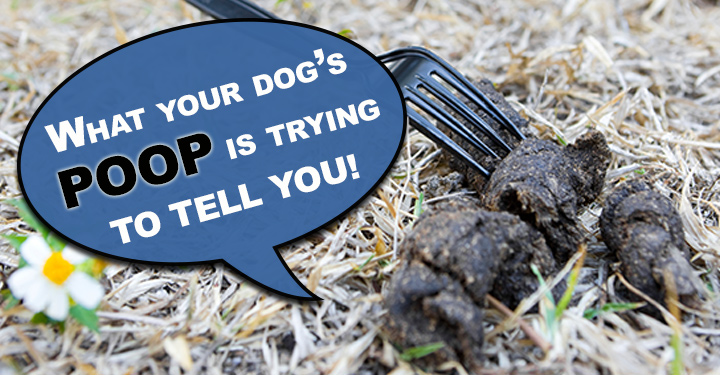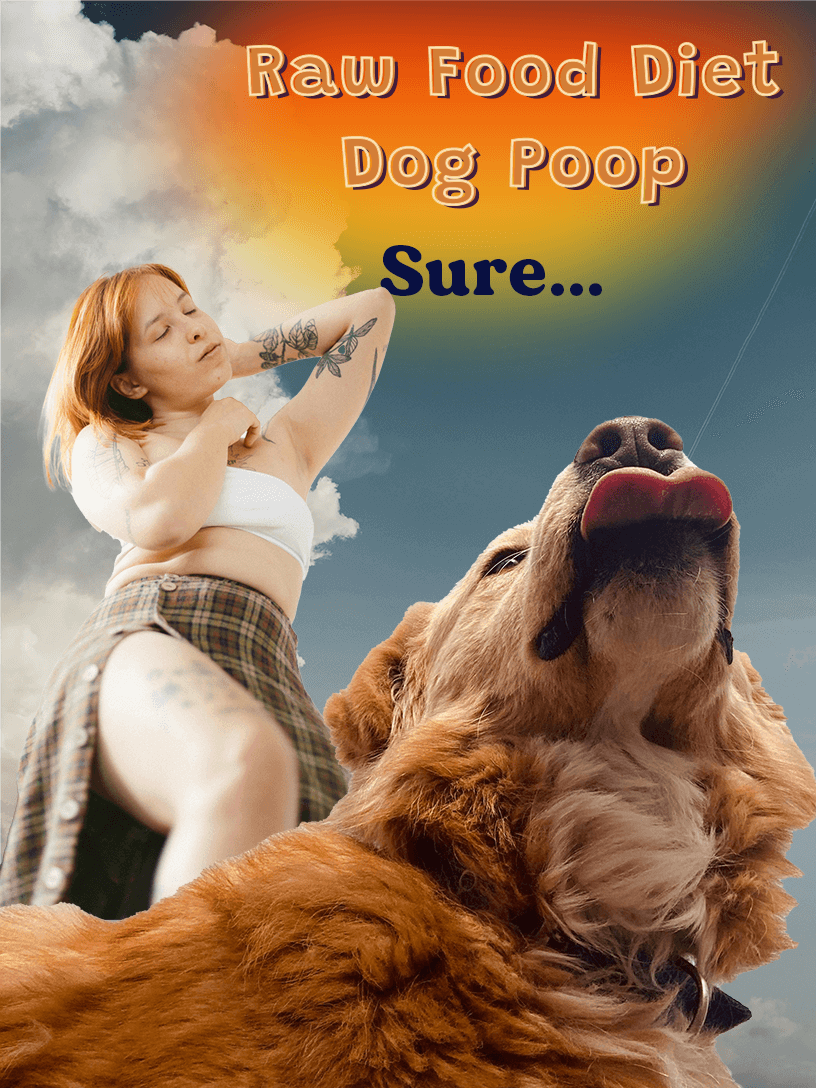Raw Food Diet Dog Poop means Dogs on a raw food diet often produce smaller, harder stools due to higher digestibility. These poops typically decompose faster than those of dogs on commercial diets.
Transitioning your dog to a raw food diet can significantly alter their poop. Owners frequently report that their pets have less frequent and more compact bowel movements. This is primarily because a raw diet is typically high in protein and nutrients, which dogs can digest more thoroughly, leaving less waste behind.
The result is not just a change in the size and consistency of their poop but also an improvement in their overall digestive health. A raw diet is closer to what canines would naturally eat in the wild, which explains why their systems utilize it so efficiently.
This diet can also improve skin, shinier coat, and energy. Before switching to a raw food regimen, consult a veterinarian to ensure it’s the right choice for your dog’s specific health needs and lifestyle.
Introduction To Raw Food Diets For Dogs
The Raw Food Diet for Dogs explores a canine dietary choice gaining traction among pet owners. This diet promises a more natural eating experience for our four-legged friends, but it’s not without its debates.
Popularity And Controversy
Raw food diets for dogs have surged in popularity. Supporters claim improved health benefits, while critics raise concerns about potential risks. This trend has many pet owners questioning traditional kibble diets. They seek a more “ancestral” approach to their dogs’ nutrition.
Basics Of A Raw Diet
What’s in a raw food diet for dogs? Key components include raw meat, bones, fruits, and vegetables, which mirror what wild canines eat. Proponents believe this diet produces shinier coats, healthier skin, and more energy. Yet, ensuring a balanced diet to meet all nutritional needs is crucial.
Expected Changes In Dog Poop
As pet owners explore the raw food diet for their dogs, they often notice changes in their pet’s poop. Such changes can indicate the dog’s health and how well they are adjusting to their new diet.
Texture And Composition
Switching to a raw diet generally leads to noticeable differences in a dog’s stool. Owners might observe that their dog’s poop becomes:
- Firmer and smaller in size
- It is less sticky, making it easier to pick up
- It is composed of finer particles, reflecting the natural digestion of raw meats and bones
These changes occur because a raw diet is often rich in protein and low in carbohydrates, leading to less waste.
Frequency And Odor
With a raw food diet, dogs tend to poop less frequently. This is due to the high digestibility of raw foods. As a result, their bodies utilize more of what they consume, producing less waste. Dog owners can expect:
| Aspect | Change |
|---|---|
| Frequency |
decrease in the number of bowel motions per day |
| Odor | Less pungent smell compared to kibble-fed dogs |
This decrease in odor is particularly beneficial for indoor pets, contributing to a cleaner home environment.
Health Implications
Exploring the health implications of a raw food diet for dogs reveals significant changes in their digestion and overall health. Understanding these effects helps them make informed choices about their diet.
Digestive System Adjustments
Switching a dog to a raw food diet often leads to noticeable changes in their poop. Owners typically observe:
- Smaller and harder stools: This indicates more efficient nutrient absorption.
- Less odor: Raw diets lead to less smelly waste.
- Increased hydration: Raw foods have more moisture, aiding hydration.
These changes occur as the dog’s digestive system adapts to raw foods’ high protein and low carb content. Initially, some dogs may experience:
- Diarrhea or constipation: Temporary as the body adjusts.
- Increased flatulence: This might occur during the early stages.
Long-term Health Effects
A raw diet can influence a dog’s health over time. Potential benefits include:
- Enhanced immune system: This leads to fewer illnesses.
- Better coat condition: Results in a shiny and healthier coat.
- Improved energy levels: Dogs may show more vitality.
However, it’s crucial to monitor for any adverse effects, such as:
- Nutritional imbalances: These may develop if the diet isn’t well planned.
- Exposure to pathogens: Raw meats can carry harmful bacteria.
Regular vet check-ups ensure the diet meets all nutritional needs without compromising health.
Nutritional Analysis
Analyzing the nutritional content of your dog’s poop can unveil a lot about the raw food diet they’re on. Let’s delve into what nutrients are in your furry friend’s waste and why they matter.
Vitamins And Minerals
Raw food diets often lead to richer vitamin and mineral content in dog poop. This is a sign of nutrient-dense meals. Dogs on raw diets typically excrete stools with higher levels of:
- Vitamin A is necessary for strong immunity and eyesight.
- Vitamin E – protects cells from damage.
- Calcium – key for strong bones and teeth
- Phosphorus – works with calcium to support skeletal health
These nutrients are not only vital for your dog’s overall health, but their presence in poop indicates good absorption from their diet.
Protein And Fat Content
Protein and fat are the cornerstones of a raw food diet. Analyzing dog poop for these elements shows how well the diet is working. You can expect:
| Nutrient | Role | Observation in Poop |
|---|---|---|
| Protein | Builds muscle | Less waste, firm stools |
| Fat | Provides energy | Healthy sheen, not overly greasy |
High-quality poop with balanced protein and fat suggests efficient digestion and optimal health. It should be firm, well-formed, and not too smelly.
Comparing Raw And Commercial Diets
Choosing the right diet for a dog can be a game-changer for their health. Owners often weigh the benefits of raw food diets against commercial options. Let’s investigate how these diets impact a dog’s digestion and stool.
Stool Differences
Raw food diets often lead to smaller, firmer stools. This is because raw diets have fewer carbs and fillers. Commercial kibble can cause larger, smellier waste. This is due to more undigestible content. Here are some key differences:
- Volume: Raw diet stools are less bulky.
- Odor: Less pungent on a raw diet.
- Texture: Firmer stools indicate better digestion.
- Frequency: Dogs on raw diets poop less often.
Veterinary Perspectives
Vets look closely at diet when considering a dog’s health. Some vets support raw diets for their natural approach. Others worry about the risk of pathogens in raw meat. Let’s see what they focus on:
| Concern | Raw Diet | Commercial Diet |
|---|---|---|
| Nutrition | It may be more natural, but balance is key. | Often fortified with vitamins and minerals. |
| Safety | Risk of bacterial contamination. | The cooking process kills most pathogens. |
| Digestibility | It is highly digestible if well-planned. | It may contain more fillers, affecting digestibility. |
A vet’s recommendation will ultimately depend on the dog’s needs. Pet owners should consult with their vet before making diet changes.
Safety Concerns
Exploring the raw food diet for dogs stirs curiosity about the changes it might bring. Pet owners often notice differences in their dog’s poop. But safety is a key concern. Let’s dive into the potential risks associated with this diet change.
Bacterial Risks
A raw diet may expose dogs to harmful bacteria, including E. coli and Salmonella. Both can affect dogs and humans alike. Dogs may handle bacteria better than humans but can still become carriers, putting families at risk, especially those with weak immune systems.
Parasites And Pathogens
Raw diets may contain parasites and pathogens that can cause illnesses in dogs. Common concerns include tapeworms and Toxoplasma. Cooking usually kills these threats, but a raw diet skips this crucial step. It is vital to source high-quality meat, reducing the contamination risk.
| Potential Parasite | Risk Factor |
|---|---|
| Tapeworms | High in raw or undercooked meat |
| Toxoplasma | Common in raw meats, it can infect humans |
Dog owners need to stay informed about these risks. To protect pets and family members, always handle raw dog food with care and ensure cleanliness. Consult a vet before starting a raw food diet. They can offer guidance on how to do it safely.
Owners’ Experiences
Dog owners often see changes in their pets’ poop when switching to a raw food diet. These changes can be dramatic, sparking interest and discussion among pet parents. Let’s dive into the real-life experiences of those who have embraced this diet for their furry friends.
Testimonials
Every pet owner’s journey is unique, but many share similar stories when it comes to the impact of a raw food diet on their dogs’ poop. Here are a few standout testimonials:
- Less Odor: Many report a noticeable decrease in poop smell.
- Smaller Stools: Dogs on raw diets often have more compact waste.
- Improved Consistency: Firmer stools are a common outcome.
- Enhanced Color: A healthier, less alarming color is frequently mentioned.
Case Studies
For a deeper understanding, let’s look at a couple of case studies highlighting the benefits and effects of a raw food diet on dog poop:
| Case | Diet Change | Duration | Results |
|---|---|---|---|
| Case 1: Max, Labrador | Commercial to Raw | 4 Months |
|
| Case 2: Bella, Beagle | Kibble to Raw | 3 Months |
|

Credit: www.bigdogpetfoods.com
Transitioning To A Raw Diet
Switching your dog to a raw food diet can be a big step. It’s essential to make this change carefully to keep your dog healthy and happy. Below, we’ll discuss how to transition smoothly and what to watch for in your dog’s reaction.
Gradual Change
Start slowly by mixing a small amount of raw food into their diet. Gradually increase the raw portion over a few weeks.
This method helps your dog’s digestive system adjust without stress.
- Day 1-3: Serve 25% raw food mixed with 75% current food.
- Day 4-6: Increase to 50% raw food.
- Day 7-9: Serve 75% raw food.
- Day 10: Switch to 100% raw food.
Monitoring Your Dog’s Reaction
Watch your dog closely as you switch foods. Look for signs of digestive upset, like diarrhea or vomiting, and monitor their energy levels and coat health.
| Sign | What to Do |
|---|---|
| Improved coat | Continue the diet; it’s working well. |
| High energy | Good reaction to diet change. |
| Diarrhea | Reduce raw food portions; consult a vet. |
Adjust the diet based on these observations to ensure your dog’s health and comfort while transitioning to a raw diet.
Professional Advice
When transitioning your dog to a raw food diet, noticing changes in their poop is common. Seeking professional advice ensures your furry friend remains healthy and happy. Let’s explore expert recommendations on tailoring this diet for your dog’s needs.
Consulting A Vet
Always start with a vet consultation before switching your dog’s diet. Vets provide critical insights on how raw food impacts your pet’s health and will check for any allergies or health issues that might be affected by diet changes.
- Discuss current health status.
- Understand potential risks
- Learn about nutrient requirements.
Regular check-ups after a diet change help monitor your dog’s reaction, which is essential to its health.
Customizing The Diet
Every dog is unique. Customizing their diet to match their specific health needs is essential. Start with high-quality, balanced ingredients. These should include:
| Protein Source | Veggies | Supplements |
|---|---|---|
| Meat, Eggs | Leafy Greens | Vitamins, Minerals |
Adjust portions and ingredients based on your dog’s age, weight, and activity level. Keep an eye on their poop. Consistency and colour are good health indicators. Changes in poop can signal a need to tweak the diet.
Remember, balance is key. A well-planned raw food diet can lead to firm, smaller, and less smelly poop, a sign of good digestive health.

Raw Food Diet Dog Poop
A raw food diet can significantly influence the characteristics of a dog’s poop, which is often detailed in raw food diet dog poop charts.
These charts illustrate how switching to a raw diet affects stool consistency, color, and frequency. On a raw diet, dog poop tends to be smaller, firmer, and less odorous due to higher digestibility and nutrient absorption.
The color may range from light brown to white, particularly if bones are a significant part of the diet. Additionally, dogs on a raw food diet often produce less waste overall, reflecting the more efficient utilization of the nutrients.
The charts guide pet owners to monitor their dog’s digestive health and ensure the raw diet is appropriately balanced. They help identify potential issues early, such as constipation or diarrhea, which might indicate dietary imbalances or the need for adjustments.
Frequently Asked Questions
What Does Dog Poop Look Like On A Raw Diet?
Dog poop on a raw diet tends to be smaller, firmer, and darker. It often breaks down faster than kibble-based waste.
Does Raw Diet Change Dogs’ Poop?
Yes, a raw diet can alter a dog’s feces, often resulting in smaller, harder, and less smelly stools due to higher digestibility and lower carbohydrate content.
How Do You Harden A Dog’s Stool On A Raw Diet?
To harden a dog’s stool on a raw diet, gradually introduce more bone content, ensure proper hydration, balance the meat-to-vegetable ratio, consider adding fiber-rich pumpkin, and consult your vet for tailored advice.
Is It Normal For Dogs To Have Loose Stools When Raw Feeding?
Yes, it’s common for dogs to experience loose stools when transitioning to a raw diet. This adjustment period typically stabilizes as their digestive system adapts. Always monitor their health and consult a vet if issues persist.
Conclusion
Embracing a raw food diet can transform your dog’s digestive health, as evidenced by their stool. Cleaner, firmer poop not only eases cleanup but also indicates your pet’s improved nutrient absorption. Before switching, consult a vet to ensure it suits your furry friend.
Happy feeding for a happier, healthier dog!

I’m a Canada, UAE, US, and UK-based writer and dog expert blogger. I spent over five years learning about dog food and grooming techniques. Additionally, I recommend avoiding and properly treating various physical problems in dogs. I am here to share my knowledge about good dog nutrition and care.

